Colorful Announces a Bay Trail Mining Motherboard with 8+1 PCIe Slots
by Joe Shields on November 10, 2017 2:00 PM EST- Posted in
- Motherboards
- Intel
- SoCs
- Bay Trail
- Mining
- Cryptocurrency
- PCIe
- Colorful
- J1900
- Custom

This week Colorful has introduced a uniquely designed motherboard, created specifically for the professional miner. One of the first things most will notice is this doesn’t look like most motherboards we see on the market. Instead of conforming to any particular form factor, the C.J1900A-BTC Plus V20 breaks that mold and gives us a markedly rectangular shaped board with a total of nine full-length PCIe slots. Eight of the slots can be used for installing mining graphics card of choice while the blue slot in the middle is where the Celeron J1900 SoC resides on its own PCIe card. The SoC itself has a DDR3 SO-DIMM slot, a mSATA slot, and regular SATA for storage; it also contains the board’s connectivity like networking, USB, and video output.
With the price of a single bitcoin breaking the $7000 barrier recently, GPU mining has not lost its draw of profitability, especially with alt-coins. We have seen a few Intel board partners come out with purpose made mining motherboards cramming in well over a dozen PCIe x1 slots on a single ATX form factor board in order to reduce the per-system cost of mining infrastructure. The lower the outgoing cost, the quicker miners are able to get their money back.
To that end, Colorful introduced the C.J1900A-BTC Plus V20 with enough room for eight cards without the use of riser cables. The board offers double slot spacing between each slot and looks to be around 16-inches in length and almost 7-inches wide throwing aside any standard form factor out of the way. Power is delivered to the cards through a total of sixteen 6-pin PCIe power connectors with eight located on one end and eight around each of the GPU slots.
According to the specifications, the Celeron J1900 SoC is based on Intel's Bay Trail and is a quad-core processor with a base frequency of 2.00 GHz, a burst frequency of 2.42 GHz, and fits within a 10W TDP. It has one DDR3L SO-DIMM slot supporting DDR3L 1066/1333MHz. Graphics duties are handled by integrated GPU (HD Gen 7) with speeds up to 854 MHz. Regarding I/O and expansion, there is one mini PCIe M-SATA slot, as well as a single SATA port and a 4-pin EPS 12V for power. Other connectivity includes two Realtek RTL8111E Gigabit LAN ports, HDMI output, and two USB2.0 ports.
| Colorful C.J1900A-BTC Plus V20 | |
| Warranty | 1 Year |
| Model | C.J1900A-BTX Plus V20 |
| Chipset | Intel Bay Trail |
| Processor | Integrated Celeron J1900 4C/4T, Up to 2.42 GHz, 10W TDP |
| PCIe x16 | 8 |
| VGA | HDMI |
| LAN | 2 x Realtek RTL8111E Gigabit LAN |
| Audio | N/A |
| SATA 6 Gb/s | 1 x mSATA 1 x SATA |
| USB 3.1 Gen 1(Back/Front) | N/A |
| USB 2.0 | 4 |
| 6-pin PCIe Power Headers | 16 |
| Form Factor | Approximately 15 x 7 in. |
Pricing nor availability was listed at the time of this writing. We expect it to be available within the coming months for Colorful customers, although retail availability is unknown.
Related Reading:
Source: Colorful


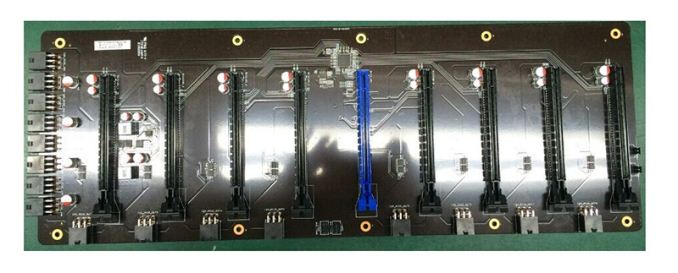
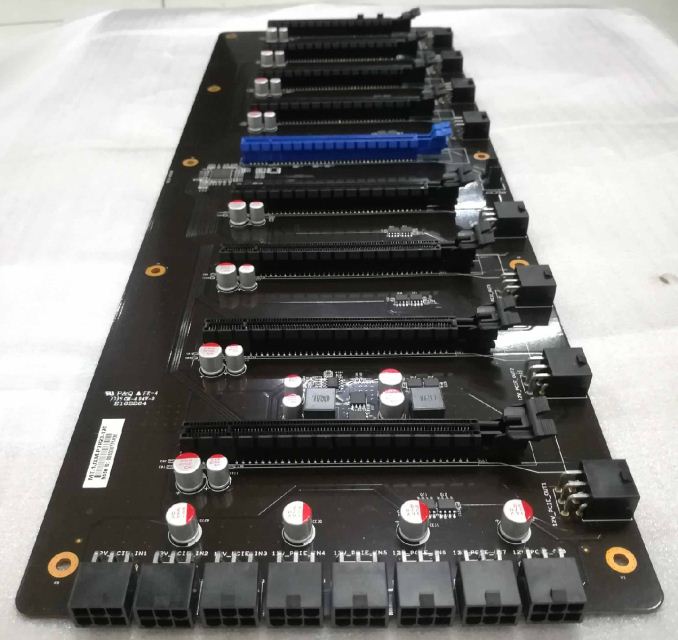
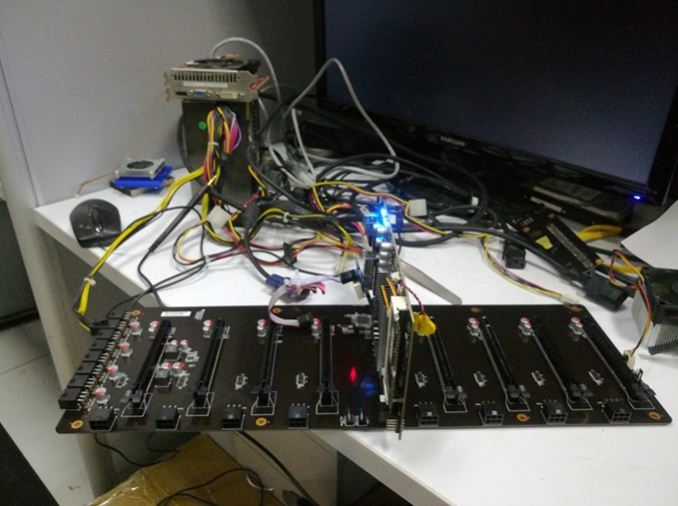
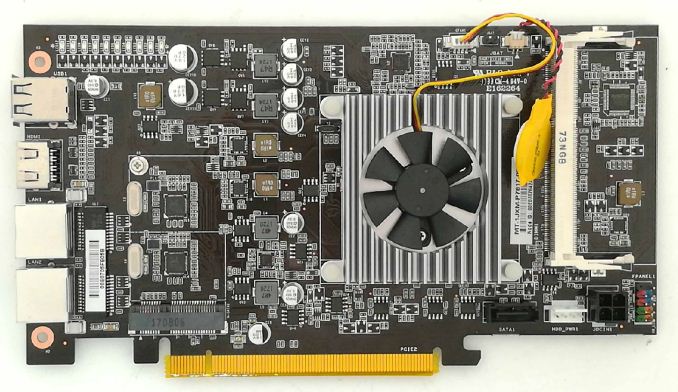

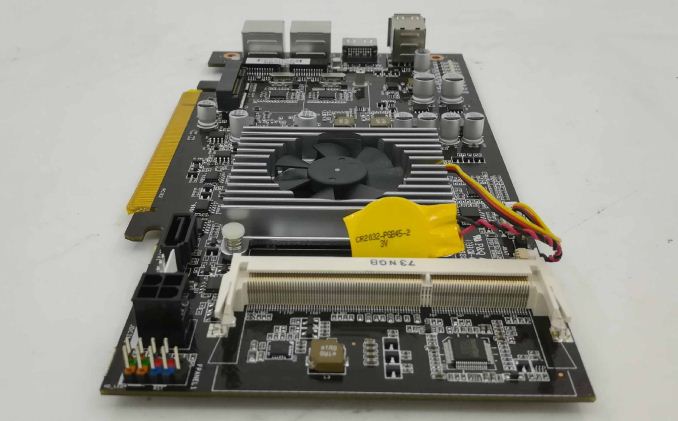








30 Comments
View All Comments
ImSpartacus - Saturday, November 11, 2017 - link
He means the 10W in overhead needs to be calculated in the total hash/W rate.skavi - Sunday, November 12, 2017 - link
Pretty sure it was just a joke.JackTheBear - Friday, November 10, 2017 - link
A lot of miners mine on Linux. Baytrail support is still bad in Linux. Do they have a custom Linux image that is patched for Baytrail and is stable? Or is this Windows only? Kind of defeats cost cutting measures if you have to pay for a Windows license.fackamato - Friday, November 10, 2017 - link
What Baytrail Linux issues?PeachNCream - Saturday, November 11, 2017 - link
The only problems I know about were related to some of those CPUs sitting on motherboards where you needed a 32bit EFI bootloader to then load a 64bit OS. That's still a little bit of a frustration today but there are even PeachNCream-proof guides out there to step a person through the process (trust me, if it's me-proof anyone can do it). The other problem that's now been solved was getting Linux to play better with eMMC storage that tended to get paired with Bay Trail. Linux was totally not ready for that when it happened back in Bay Trail's early days so it made OS boot times really long, but that's been fixed for a long time and its not even really a problem on this mining board since it uses mSATA and SATA.MrSpadge - Friday, November 10, 2017 - link
I wish all this mining specific hardware would benefit regular GP-GPu crunchers. But those PCIe speeds are too low for most applications.muigleb - Friday, November 10, 2017 - link
Any idea if the computer portion would run in a normal PCIE slot in another computer? might be nice for those people that want multiple computers in one box/use one power supply.fackamato - Friday, November 10, 2017 - link
VS VM?extide - Friday, November 10, 2017 - link
No, that is likely only physically PCIe, but electrically proprietary.Elstar - Saturday, November 11, 2017 - link
If you want shared resources, then blade servers are the way to go: https://en.wikipedia.org/wiki/Blade_serverOtherwise, general purpose CPUs on expansion boards are rare. Back in the 90s, Apple, Sun, etc. made x86 coprocessor boards because software emulation wasn't fast enough yet. Speaking of Apple in that era, a third-party named Radius made a general purpose coprocessor product called "Rocket" that found limited success.
More recently, Intel's Xeon Phi CPU design started life as a PCIe board ("Knights Corner") and in the current version ("Knights Landing") the processor supports both a PCIe mode and a self-hosting mode. Guess what? There wasn't enough demand for the PCIe version, so Intel canceled the product.
At the moment, Intel sells a product called "Visual Compute Accelerator 2" which places three Xeon GPUs with integrated graphics onto a single PCIe board. Its kind of cool, but the target market seems to be real-time H.264/H.265 transcoding by data centers, so I wouldn't get too invested in the general idea.
The fundamental problem with general purpose coprocessor boards is that there isn't a standardized way for programmers and operating systems to reason about them. Everything ends up being super custom, and self-limiting as a consequence.